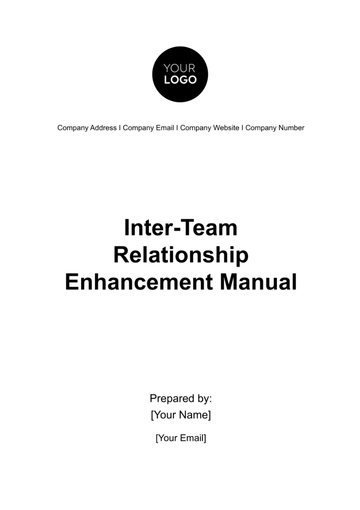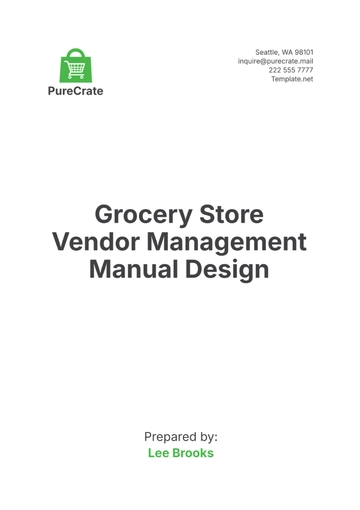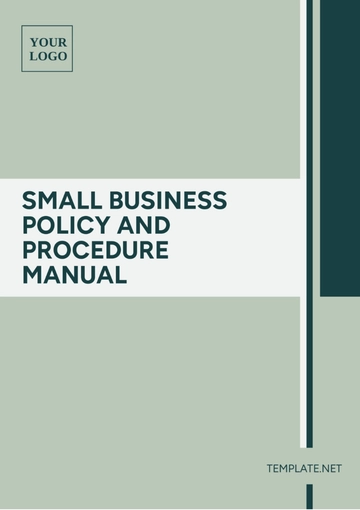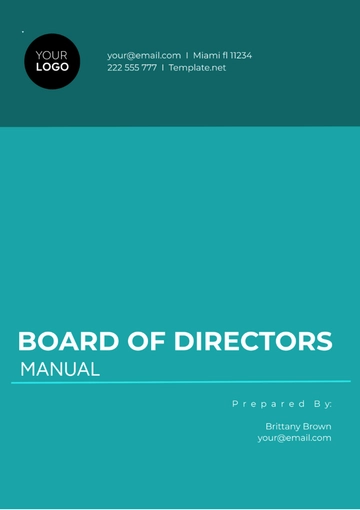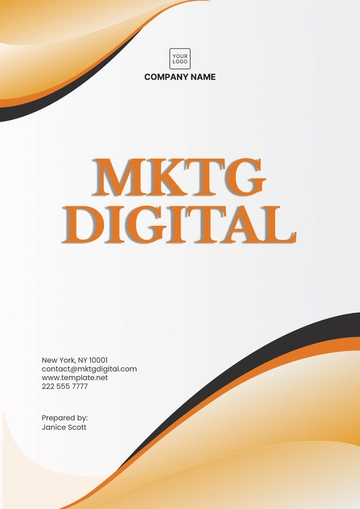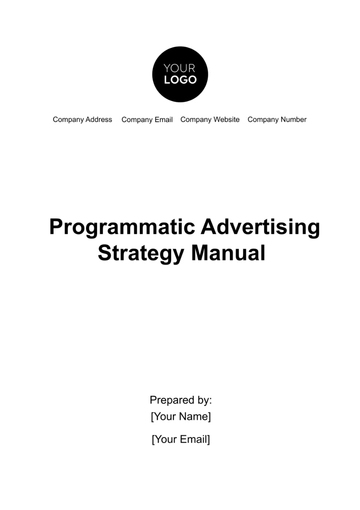Free Advertising Media Planning Manual
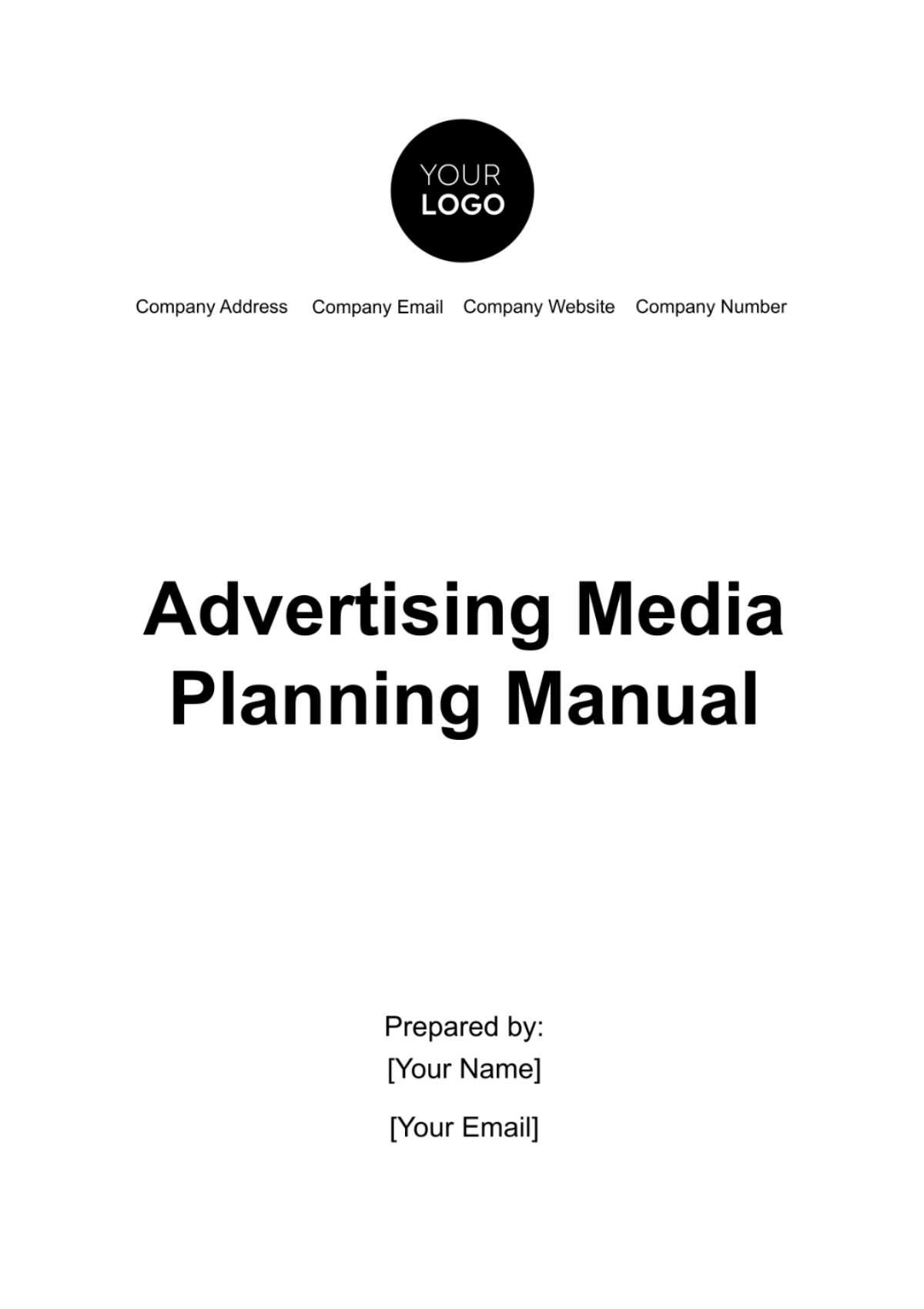
I. Executive Summary
This section provides a high-level overview, distilling the core objectives and pivotal strategies that underpin the entire manual. It serves as the strategic compass for stakeholders, furnishing a swift understanding of the overarching vision and direction of the media planning approach. In this concise narrative, decision-makers gain immediate insight into the blueprint for an effective advertising campaign, setting the tone for the in-depth analyses and methodologies elaborated upon in subsequent sections.
II. Target Audience Analysis
This section employs a meticulous examination of demographic, psychographic, and behavioral attributes to construct a comprehensive profile of the intended consumer base. This phase of the manual serves as the bedrock for informed decision-making in media planning.
A. Key Components
Demographic Analysis
In-depth scrutiny of age, gender, income levels, education, and geographical location, providing a quantitative foundation for audience segmentation.
Demographic | Target Audience | Percentage |
Age | 25-34 | 40% |
Gender | Male | 55% |
Income | $50,000-$75,000 | 30% |
Location | Urban | 60% |
Psychographic Profiling
Exploration of values, interests, lifestyles, and attitudes to unveil the deeper motivations driving consumer behavior.
Psychographic | Target Audience | Percentage |
Lifestyle | Health-conscious | 45% |
Behavioral Insights
Analysis of consumer behaviors, including purchasing patterns, brand loyalty, and product usage, guiding tailored media strategies.
Behavioral Factor | Target Audience | Percentage |
Purchasing Patterns | Online shopping | 70% |
By employing this structured approach to target audience analysis, the manual facilitates a nuanced understanding of the consumer landscape, ensuring that media planning efforts align seamlessly with the preferences and behaviors of the identified audience segments. The integration of demographic, psychographic, and behavioral data establishes a robust foundation for precision in media placement strategies.
III. Media Landscape Assessment
This section transcends a mere enumeration of available platforms, delving into a nuanced analysis of their respective strengths, weaknesses, and audience dynamics. Traditional avenues such as television, radio, and print are scrutinized alongside the dynamic realm of digital platforms, including online spaces, social media platforms, and mobile applications.
Through a judicious blend of quantitative data and qualitative insights, this assessment aims to discern the optimal channels that align with the campaign's objectives. It discerns trends, audience preferences, and emerging opportunities, providing a comprehensive view of the media terrain. By fusing statistical rigor with strategic acumen, the Media Landscape Assessment equips stakeholders with the knowledge necessary to make informed decisions, ensuring that media selections resonate effectively with the intended audience while aligning seamlessly with the overarching campaign strategy.
IV. Budget Allocation
We delve into the intricacies of budget allocation, employing a judicious approach to optimize resources across various media channels. The primary objective is to ensure that the allocated budget aligns seamlessly with overarching campaign goals while maximizing reach and resonance.
A. Key Components
Media Channel Allocation
A detailed breakdown of the budget across diverse media channels, encompassing traditional platforms (TV, radio, print) and contemporary digital avenues (online, social media, mobile). This allocation is informed by a meticulous analysis of each channel's effectiveness in reaching the target audience.
Table 1: Illustrative Budget Allocation
Media Channel | Allocated Budget ($) | Percentage Of Total Budget |
TV | 250,000 | 30% |
Timing Considerations
Strategic allocation of budgetary resources over the campaign timeline, aligning expenditures with peak audience engagement periods and relevant industry events.
Contingency Reserves
Provision for contingency funds to address unforeseen circumstances or capitalize on emerging opportunities without compromising the campaign's core objectives.
This meticulous budget allocation strategy, illustrated in Table 1, serves as a comprehensive guide for financial planning, fostering an optimal balance between cost-effectiveness and impactful audience reach.
V. Media Objectives
Our focus is on articulating clear and measurable goals that transcend mere visibility, delving into the realms of brand resonance and audience interaction.
Each objective is a strategic pillar designed to fortify the campaign's impact, encompassing:
Brand Awareness Elevation: Precise definition of strategies to enhance brand visibility, ensuring that the target audience not only acknowledges but also retains a lasting imprint of the brand.
Engagement Prowess: Crafting objectives that transcend passive exposure, emphasizing active audience engagement through compelling content, interactive experiences, and strategic placement.
Conversion Precision: Establishing benchmarks for conversion metrics, with a keen eye on translating audience interest into tangible actions, whether it be product purchases, sign-ups, or other desired outcomes.
These Media Objectives are not just waypoints; they are strategic milestones that navigate the campaign towards a trajectory of resonance and impact, embodying the essence of our brand within the collective consciousness of our target audience.
VI. Media Buying Guidelines
These guidelines intricately detail the criteria for negotiations, securing optimal positions across diverse channels. Timing, frequency, and audience relevance are meticulously weighed, ensuring a harmonious alignment with overarching campaign objectives.
In this section, the manual unveils a strategic framework for navigating the dynamic landscape of media acquisition. Delving into the art and science of negotiation, these guidelines empower stakeholders to make informed decisions, leveraging cost efficiencies without compromising reach or resonance. Through a discerning lens, we explore the symbiotic relationship between media channels and campaign goals, offering a roadmap to navigate the complexities of the marketplace and secure placements that resonate with our target audience.
By adhering to these Media Buying Guidelines, the manual provides a roadmap for achieving not only cost-effective media placements but also strategic positioning that maximizes the impact of our advertising endeavors.
VII. Content Integration Strategy
This section meticulously outlines a strategic blueprint for the deliberate infusion of our advertising content into various platforms. It emphasizes not only consistency in messaging but also an acute awareness of each channel's unique nuances.
Multichannel Synergy: Delve into the intricacies of harmonizing content across channels, leveraging the strengths of each medium while maintaining a cohesive brand narrative. Explore methods to synchronize visuals, tone, and messaging to resonate authentically with the audience.
Narrative Continuity: Detail how our narrative arc unfolds across different touchpoints, crafting a compelling story that captivates and engages our target audience. This involves a nuanced understanding of the audience's journey through various media, ensuring a continuous and immersive brand experience.
Adaptive Creativity: Discuss the adaptive creativity required to tailor content for different platforms without diluting the core message. Address the nuances of content optimization for diverse formats, such as video, print, and digital, while preserving brand identity.
Real-Time Responsiveness: Highlight the importance of real-time responsiveness, enabling dynamic adjustments to content strategies based on audience interactions and emerging trends. This involves continuous monitoring of audience feedback and analytics to refine content for optimal impact.
Cross-Platform Consistency: Emphasize the significance of maintaining a consistent brand image while adapting to the unique characteristics of each platform. Illustrate strategies to strike a balance between uniformity and customization to maximize resonance across diverse media.
Metrics For Evaluation: Introduce key performance indicators (KPIs) specific to content integration, allowing for the quantitative assessment of the strategy's effectiveness. Metrics may include cross-channel engagement, message coherence, and audience sentiment to gauge the success of the content integration approach.
This comprehensive Content Integration Strategy ensures that our brand message not only reaches but resonates with our audience across a spectrum of media channels, fostering a unified and compelling brand presence in the marketplace.
VIII. Performance Metrics And Measurement
We delve into the meticulous measurement of campaign performance through the establishment of key performance indicators (KPIs) and sophisticated methodologies. The primary aim is to quantify the effectiveness of media placements and provide actionable insights for ongoing optimization.
A. Key Performance Indicators (KPIs)
Definition of granular KPIs tailored to campaign objectives, spanning metrics such as reach, impressions, click-through rates (CTR), conversion rates, and engagement levels.
B. Measurement Methodologies
Detailed elucidation of the methodologies employed for data collection, analysis, and interpretation, ensuring a robust and comprehensive evaluation of campaign performance.
Performance Metrics Table
Metric | Definition | Measurement Method |
Reach | Total number of unique viewers or users | Advanced analytics tools |
The Performance Metrics Table serves as a visual aid, offering a concise snapshot of the key metrics tracked during the campaign. This systematic approach facilitates a nuanced understanding of the campaign's impact on the target audience, enabling agile decision-making for optimization strategies. As we navigate through the intricate landscape of performance analysis, this section aims to empower stakeholders with the tools needed to discern actionable insights and refine future advertising endeavors.
IX. Contingency Plans
In this critical section, we delve into the art of proactive preparedness, anticipating potential challenges and unforeseen circumstances that may impact the seamless execution of the advertising campaign. Contingency Plans are meticulously outlined, offering a strategic roadmap to navigate through uncertainties. From unexpected shifts in market dynamics to technical glitches in media placements, this section provides a comprehensive yet agile framework, ensuring the campaign's resilience in the face of adversity. Each contingency plan is intricately tailored, offering a responsive approach to mitigate risks swiftly and uphold the campaign's integrity and effectiveness.
X. Compliance And Regulations
Meticulous attention is given to legal and ethical considerations within the advertising landscape. The manual provides a comprehensive overview of the regulatory framework governing advertising practices, ensuring strict adherence to industry standards and legal obligations. Emphasis is placed on transparency, truthfulness, and the responsible use of persuasive techniques. By aligning the advertising strategy with established regulations, the manual aims to safeguard the integrity of the campaign while fostering trust and credibility with the target audience and regulatory bodies alike.
XI. Post-Campaign Analysis
A comprehensive analysis encompasses an in-depth evaluation of media effectiveness, audience response, and the campaign's alignment with predefined objectives. Key performance indicators (KPIs) are scrutinized, offering actionable insights into the campaign's impact on brand perception and consumer engagement.
Utilizing both qualitative and quantitative data, this post-campaign analysis serves as a compass for understanding the nuances of success and areas ripe for refinement in future endeavors. Strategic recommendations are meticulously crafted, providing stakeholders with a roadmap for enhancing future campaigns and ensuring continuous optimization in the dynamic landscape of advertising.
This conclusive section encapsulates the campaign's journey, offering a reflective lens that informs future strategic endeavors with precision and foresight.
XII. Conclusion
We distill the rich tapestry of insights woven throughout the Advertising Media Planning Manual. Here, the culmination of strategic analyses converges into actionable imperatives, forming a roadmap for advertising excellence. Emphasizing the manual's role as a lodestar for marketing endeavors, the conclusion succinctly encapsulates the essence of the meticulously crafted strategies, guiding practitioners towards a nuanced and impactful execution of advertising campaigns. As the final chapter unfolds, it not only marks the end of this comprehensive manual but heralds the beginning of a journey where strategic vision transforms into tangible success in the dynamic landscape of media planning and advertising.
- 100% Customizable, free editor
- Access 1 Million+ Templates, photo’s & graphics
- Download or share as a template
- Click and replace photos, graphics, text, backgrounds
- Resize, crop, AI write & more
- Access advanced editor
Introducing the Advertising Media Planning Manual Template by Template.net – a meticulously crafted tool for digital technology professionals. This comprehensive template streamlines the complex process of media planning, offering a structured framework for creating impactful advertising campaigns. Elevate your strategy with this essential resource, ensuring precision and efficiency in your digital endeavors.
